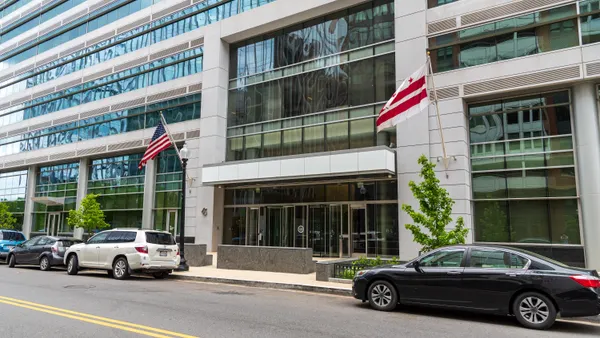The debate over expanded child tax credits has resurfaced, with advocates citing mounting research showing a pandemic-era expansion's positive impact on child poverty to push for a permanent solution. The push comes as Democrats and Republicans negotiate a year-end deal that could revive such a measure.
"I do think Congress faces a stark choice right now," said Sarah Calame, research assistant at the Center on Budget and Policy Priorities. "As Congress thinks about enacting corporate tax breaks at the end of the year, we think any sort of action on tax policies should include tax policies that benefit children and families."
Due to the COVID-19 pandemic, families with low or no incomes became eligible for the full credit for the first time under the American Rescue Plan, alongside families with relatively higher incomes. The plan also increased the maximum credit amount and included credits for 17-year-olds, rather than capping them at age 16.
However, the expanded program under President Joe Biden's pandemic relief plan, approved in March 2021, expired at the end of2021. Here's what we know about how another expanded credit would impact the education sector — and the road it may take to enactment.
Improved school performance
Research trickling in since the program expansion expired has shown the significant benefits that accrued to low-income families. The broadened program pushed 5.3 million people— including 2.9 million children — out of poverty in 2021, and contributed to a 46% decline in poverty from the year before, according to U.S. Census Bureau data released in September.
The expansion was especially important for rural families because their incomes are often too low to qualify for the full credit under the traditional program, a November report released from the Center on Budget and Policy Priorities showed. According to the IRS, a taxpayer may qualify for partial credit if they earn at least $2,500.
The ARP expansion of the child tax credit closed that gap, said Megan Curran, policy director for Columbia University's Center on Poverty and Social Policy. "So this was like a game-changer in terms of access for all of these kids who really, really would benefit from it," Curran said.
Some who oppose the program, however, cite its economic drawbacks. Scott Hodge, president emeritus and senior policy advisor at the Tax Foundation — and one of the inventors of the child tax credit in 1993 — suggests it could cause people to leave the workforce and reduce labor and economic output.
That, however, doesn't take into account the program's overall and long-term benefits, said Curran.
Previous research has linked additional tax credit income with higher student test scores, graduation rates and overall school performance. Every $1,000 in additional income tax credit, for example, was found to raise students' test scores by 6% of a standard deviation, according to research published by the IRS and conducted by the National Bureau of Economic Research.
Effect of family spending on schools
According to an analysis by CBPP, which has closely tracked the expanded credit's implications, top uses for low-income families included food, clothing and education costs. Data in September suggested families were also using the money for back-to-school spending — a finding that was confirmed by Mastercard, which reported on the child tax credit's effects on retail spending.
"Being in a more financially secure environment can allow kids to focus on school and learning," said Calame. According to Calame, the expanded credit also helps prevent adverse childhood experiences like eviction and food insecurity that are known to affect student learning and classroom behavior.
This takes pressure off of schools, which often have to invest in programs and wraparound services to help meet students’ basic needs, including everything from food to clothing and housing, Curran added. "All those different types of things are just taking care of the emergencies in kids' lives to make sure that they actually can absorb what's being taught to them."
Teachers and school support staff also received the credit, alleviating at least some financial pressure for them.
Amped-up efforts from states, national leaders
While a proposal last year to revive the expanded credit fell short of the full expansion under ARP and still eventually failed, current year-end spending negotiations have renewed the possibility for its revival.
"I think there are some really positive indications that we could actually see some progress sooner rather than later," Curran said. "There is a huge amount of support for this and commitment on behalf of national policymakers."
The deadline for negotiations over the 2023 spending bill, which would include the expanded tax credit if approved, is Dec.16, when Congress' short-term funding extension expires.
State leaders have shown momentum, as well. Regardless of the federal expansion of the child tax credit, states can take the matter into their own hands.
Dating as back as 2013, a dozen states have enacted a state child tax credit, according to Heather Wilson, senior policy specialist for the National Conference of State Legislatures. Additional states have explored creating a state level tax credit or increasing the value of current ones.
"NCSL has seen an upward trend in states enacting, expanding, and or addressing the federal CTC within state legislation both during the federal expansion and following the expiration of the federal expansion," said Wilson in an email. At least nine child tax credit-related bills were enacted across eight states in 2022, per NCSL's tracking.




















